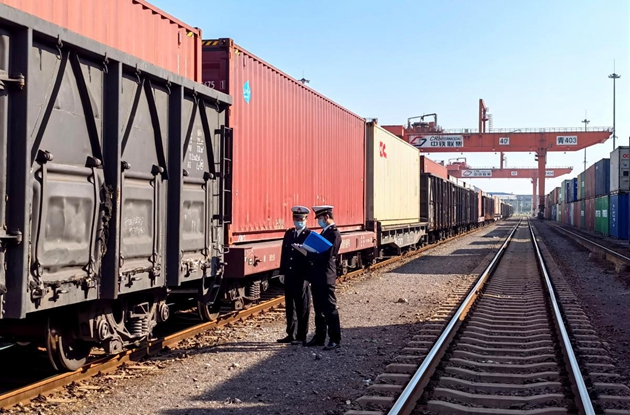Shandong stabilizes supply, industrial chains
(chinadaily.com.cn)| Updated : 2022-11-30
Print Print
Customs officers inspect a China-Europe freight train in Qingdao, Shandong province. [Photo by Zhou Shichao/For chinadaily.com.cn]
East China's Shandong province has stepped up efforts to improve its efficient and smooth distribution system, and ensure the safety, stability and steady flow of industrial and supply chains to provide strong support for high-quality development.
Recently, a China-Europe freight train from Hamburg, Germany arrived in Jinan. After being loaded, it set off for Shanghai. This is the 2,000th China-Europe freight train that has operated in Jinan. In 2017, Jinan launched its first China-Europe freight train.
The growing China-Europe freight train services are contributing to stabilizing global supply chains during the COVID-19 pandemic, according to industry experts.
The China-Europe freight trains departing from Jinan can reach coastal ports in the east and border ports in the west. Since the beginning of this year, the trains have transported goods worth nearly $590 million for more than 300 foreign trade enterprises in Jinan, and support the stability of the industrial chain and supply chain, according to local officials.
The Dongjiazhen area in Licheng district, Jinan is close to the airport, expressway and railway freight stations, which offers basic conditions for the area to become a transportation hub. Starting in 2019, Jinan started building an international land port based in the Dongjiazhen area.
Other cities in Shandong are also working to maintain the resilience and stability of the industrial and supply chains to support regional economic and social development.
Official data indicates that in the first eight months of this year, the service industry above designated size in Shandong achieved an operating revenue of 850.18 billion yuan ($118.86 billion), an increase of 12.7 percent year-on-year, with transportation, warehousing and other related services boosting growth by 10.8 percentage points.

 Xi's Moments
Xi's Moments  Shandong gains remarkable results in promoting high-quality development
Shandong gains remarkable results in promoting high-quality development  2025 National Two Sessions
2025 National Two Sessions